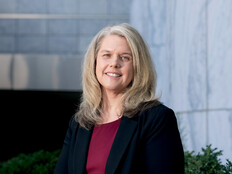LeadingAge 2018: Why Senior Care Organizations Must Prioritize Technology Initiatives
Technology use among seniors is higher than it’s ever been, according to the Pew Research Center. In a report published last year, Pew found that the share of seniors who owned smartphones doubled from 2013 to 2017. The report also found a rise in tablet ownership and social media use among seniors.
JOIN THE CONVERSATION: Follow @CDW_Healthcare on Twitter for continued LeadingAge 2018 coverage!
Much like the residents it serves, the senior care industry and its use of technology continues to evolve every day, a concept that was on full display at the LeadingAge 2018 conference in Philadelphia last week. In particular, organizations and senior care leaders shared how technology has shifted from being a luxury to a necessity for keeping residents happy, healthy and active.
Taking a More Business-Focused Approach to Tech Deployment
While discussing what the future of IT in senior care will look like, several CIOs also talked about how they’re building up their infrastructures to meet increased business demands. Peter Kress, senior vice president and CIO for West Point, Pa.-based Acts Retirement-Life Communities, said his organization has moved much of its infrastructure to a public cloud while downsizing its data center.
“My personal opinion is that the public clouds are the most scalable, most secure, best supported environments to be in right now,” Kress said. “That could change again in the future — pendulums always swing — but that will never again mean that we’re building out and managing internal infrastructure.”
Meanwhile, John Couture, CIO of Des Moines, Iowa-based Lifespace Communities, said his organization plans to move toward Infrastructure as a Service so he and his IT team can focus more on higher-value and complex projects and initiatives that will improve the company’s ability to compete in the marketplace.
“I did not grow up in technology. I actually came from the business side and financial services,” Couture said. “I’ve always believed that business strategies drive technology. The challenge is that technology is advancing so quickly.”
Improving Social Connectivity for Seniors
Technology’s role also continues to grow in terms of combatting loneliness. For instance, Diana Delgado, chief operating officer for Lakewood, Colo.-based Eaton Senior Communities, discussed how a program that distributed iPads to residents helped to improve their connections to family and friends thanks to improved access to social media and increased community socializing.
Katie Wade, associate director for Well Connected, a community of outreach staff and volunteers for adults over age 60 that is part of Covia, a group of senior communities based in the Bay Area in California, talked about the impact that videoconferencing tools have had on seniors in terms of socializing. Well Connected provides seniors with access to more than 70 social groups via phone or videoconference weekly, and the vast majority of the content shared is produced by participating individuals, Wade said, an environment that helps to provide seniors with more of a sense of self-worth.
“There are so many people who don’t have access to all the amazing creative aging programs that are happening,” Wade said. “Technology is a way that we can make that more accessible.”
Don’t Make Assumptions About Seniors’ Technology Knowledge
One of the conference’s overarching themes was not making assumptions about the capacity of seniors to understand and use technology. Bill Rabe, CIO for Skokie, Ill.-based Covenant Living Communities and Services, said that one of the biggest complaints he receives from residents is when the Wi-Fi has gone down.
“There are some people who have as many as 10 devices in their apartments, when you talk about printers, smart TVs and all of those other devices,” Rabe said.
To that end, he said, it’s important to have a scalable network environment that can support a growing number of tools as more and more seniors demand wireless access.
Meanwhile, Michael Gray and Jennifer Griveas of The Eliza Jennings Senior Care Network in Olmsted Township, Ohio, talked about how engaged seniors have been at cybersecurity training sessions they provide to residents.
“They come with great questions, sometimes more sophisticated than a lot of people expect of older adults,” Griveas said.
Check out our event page for other articles from LeadingAge 2018. Follow us on Twitter @CDW_Healthcare, or the official LeadingAge Twitter account, @LeadingAge, and join the conversation using the hashtag #LeadingAge18.










